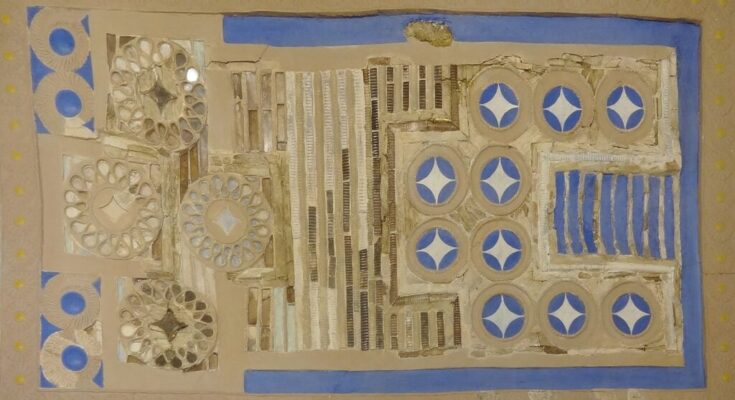
The unique ancient Greek board game Zatrikion that was discovered at the Knossos Palace on Crete shows that the ancients had a penchant for leisurely games.
The name Knossos Game Board dubbed by archaeologists was used for a game ancient Greeks called zatrikion (ζατρίκιον). It was found between 1897 and 1901 by British archaeologist Sir Arthur Evans (1851-1941) . It was Sir Evans who coined the term Minoan, after the mythical king of Crete, Minos.
The excavation of the palace that belongs to the Bronze Age began in 1877 by the Cretan businessman and antiquarian Minos Kalokairinos.
The board that was found is a rectangular adorned with gold and silver, ivory, rock crystal and glass paste and was likely placed on a wooden base that had disintegrated. Four cone-shaped ivory pieces were found next to the board, which were part of the game as they match the size of the four large circles on the board.
Specifically, the board consisted of ivory plated with gold leaf. It was decorated with rosettes of crystal in blue glass paste settings with silver foil. It dates back to around 1600 BC.
The precious artifact was found in an area northeast of the palace which archaeologists named the “corridor of the zatrikion”.
The Minoan civilization
The Minoan civilization flourished in the Middle Bronze Age (c. 2000 – c. 1450 BC), dominating the eastern Mediterranean. Coming to contact with other cultures across the Aegean, the Minoans made a significant contribution to the development of Western European civilization.
The Minoans were an advanced, sophisticated society. They had their own writing system, indulged in fine arts, crafted elegant pottery, had advanced architecture – as the labyrinthine Palace of Knossos attests – and enjoyed a life of leisure and recreation. Apparently, playing board games was a popular recreational activity.
According to the Ludi game portal, the board consists of ten circles: three vertical, three more running perpendicular to those, two more perpendicular downward from those, and two above the central two circles of the horizontal row. Four more circles, arranged in a diamond, are separated from the rest of the board, above the two circles above the horizontal row.
Even though no other intact examples of the game have been unearthed, it is possible that the zatrikion board game had travelled to other sites in the ancient world. Minoan civilization influenced other islands in the Mediterranean and mainland Greece.
Ζatrikion and the Mesopotamian board game
Historians and archaeologists try to decipher the exact way the game is played. Zatrikion has been compared to the Royal Game of Ur, the oldest playable board game in the World. It was discovered 2,600 – 2,400 years BC in Mesopotamia.
A Babylonian astronomer wrote the rules of the game in cuneiform around 177 BC, hence the description of “the world’s oldest playable game.”
A British Museum curator, who deciphered the game of Ur’s rules, wrote that “two players compete to race their pieces from one end of the board to the other. The central squares were also used for fortune telling.”
The similarities between the ancient Greek board game and the Ur game suggest that both game – which is also called the Game of 20 Squares – was very popular with people of all classes. People carried the board all over the Middle East, and if the board was not available, people would scratch the board into clay or rock, if no board was available.
The name established in Byzantine times
There is another interpretation of the ancient Greek board game in its Minoan form. The board is believed to have depicted a perfect calendar with four years. The 72 circumferential lines on its surface corresponded to 72 time intervals of 20 minutes – that is, a 24-hour day.
The masterful construction suggests that it was a royal toy. Sir Evans wanted to strengthen this theory by making an attempt to examine the rules. He concluded that the game was played by two players, whose goal was to “capture” the Acropolis where the four most valuable checkers were placed. This was probably done with both dice and predetermined strategy.
The name zatrikion prevailed and was established during the Byzantine years. Back then, the form of the game was much more reminiscent of modern day chess. However, at that time, the Byzantine society had already come into contact with similar board games from the East and the West, so both the form and the rules of the board game had changed.
Another theory wants the Byzantine zatrikion to be played on a circular tableau that looks like a miniature ancient theater. It was divided into 64 squares and each player’s line-up consisted of 16 checkers, with the aim of the game being to crush the opponent by taking all the precious materials on the board.



